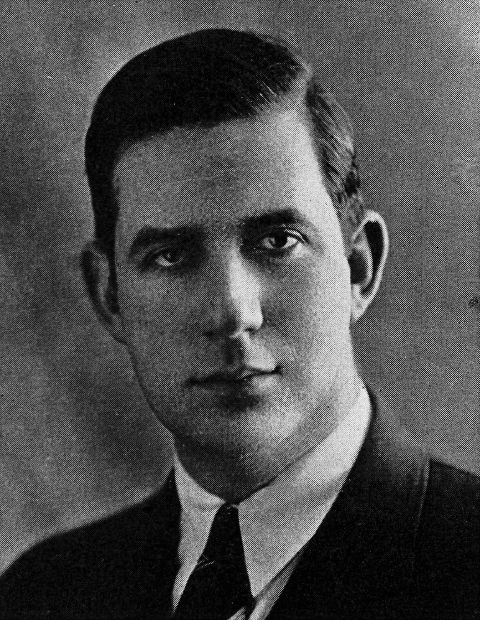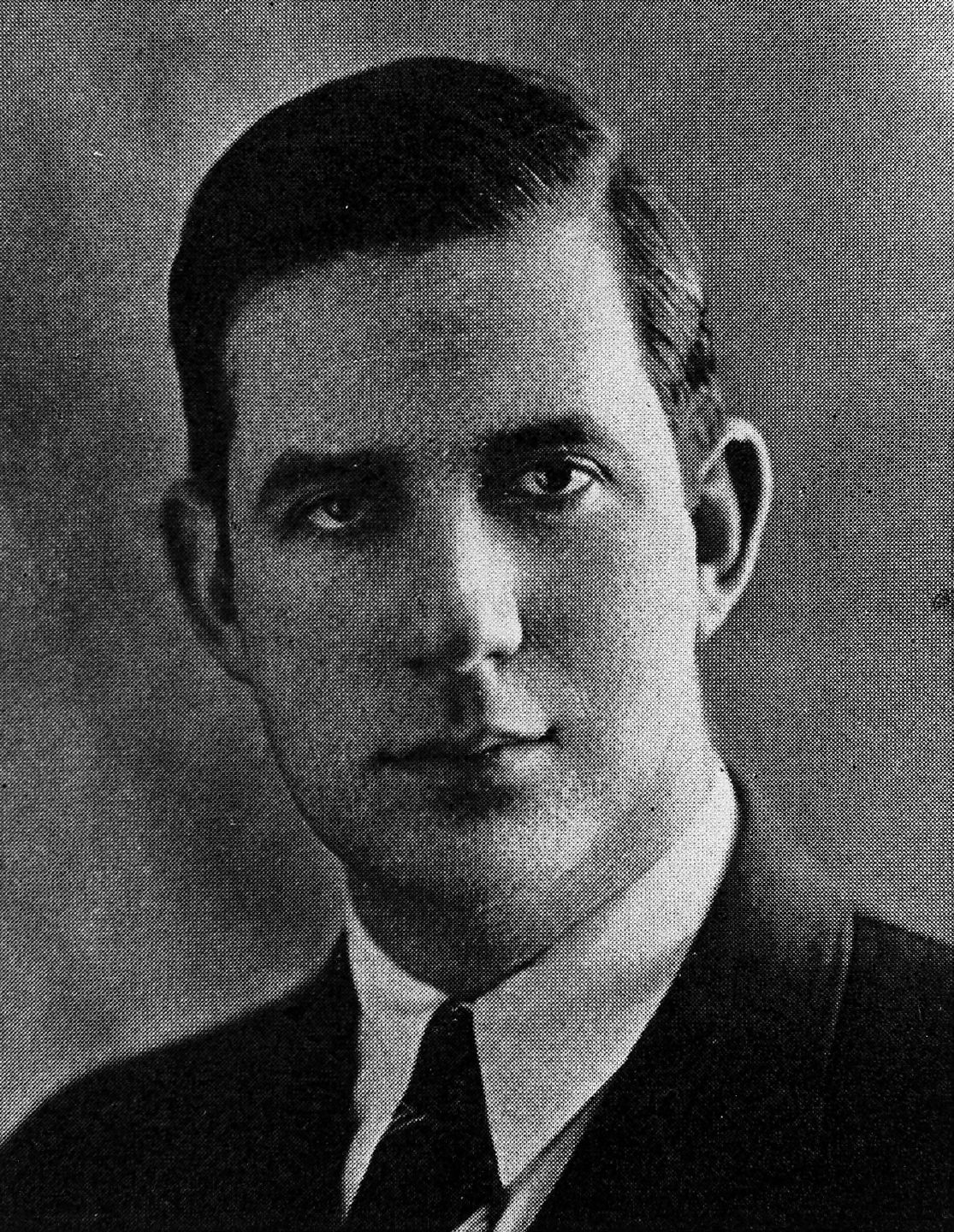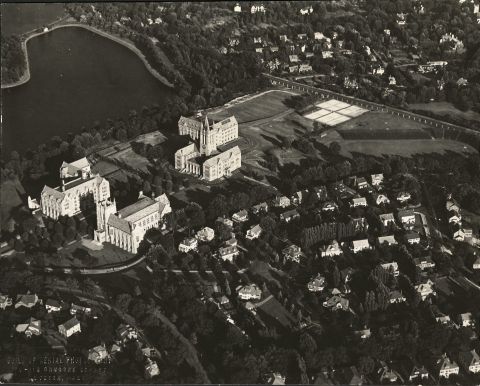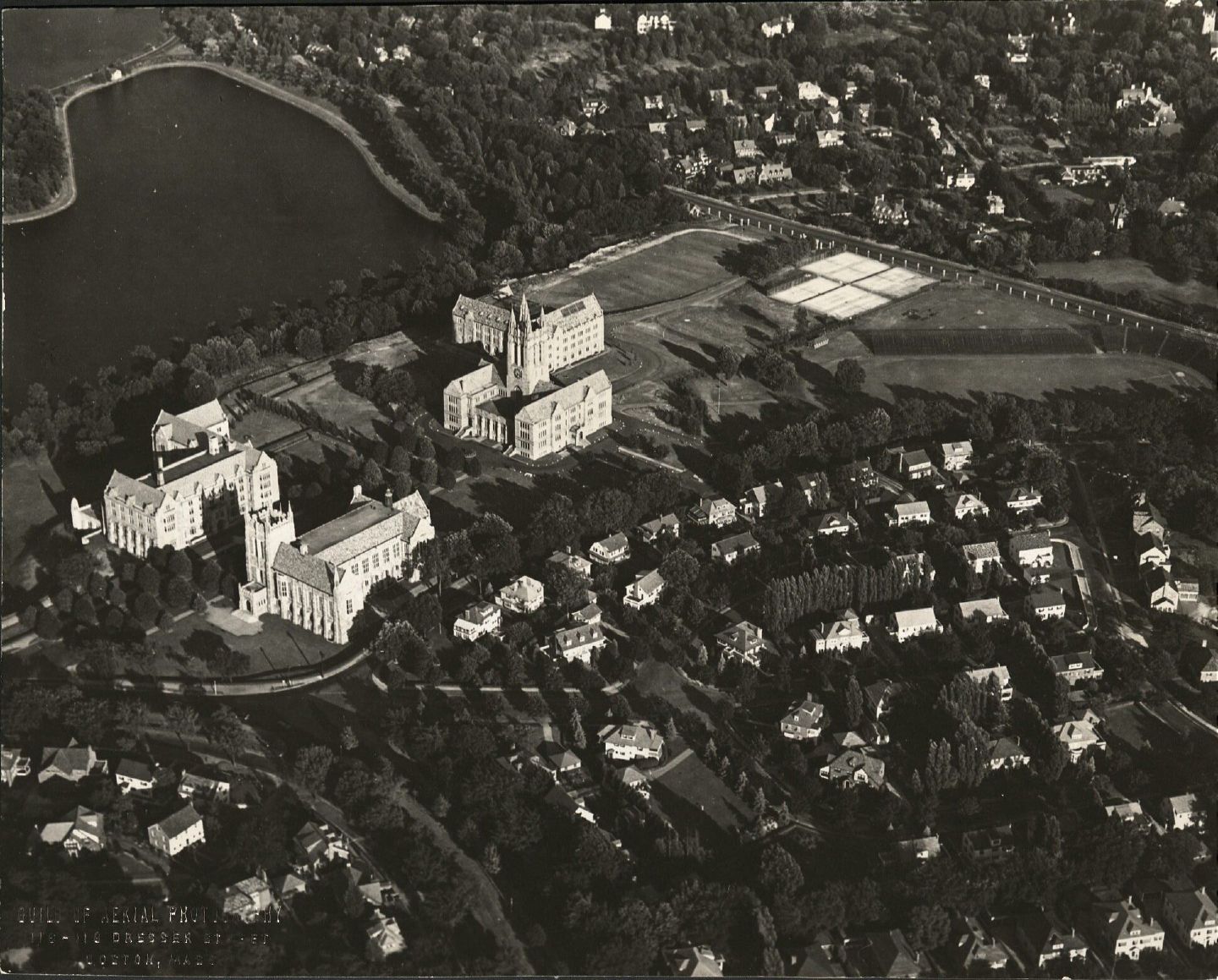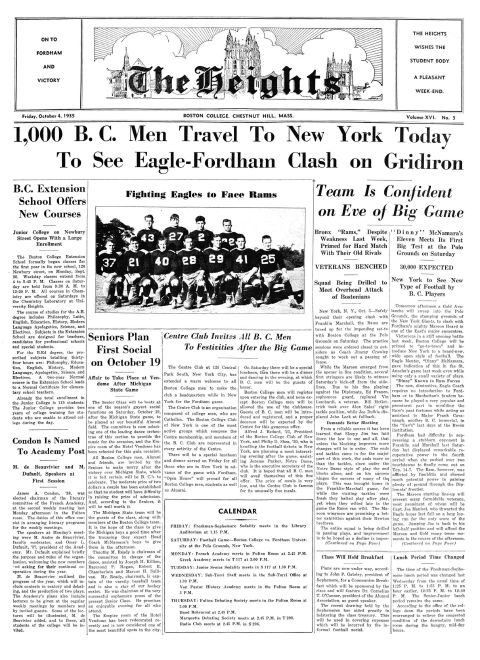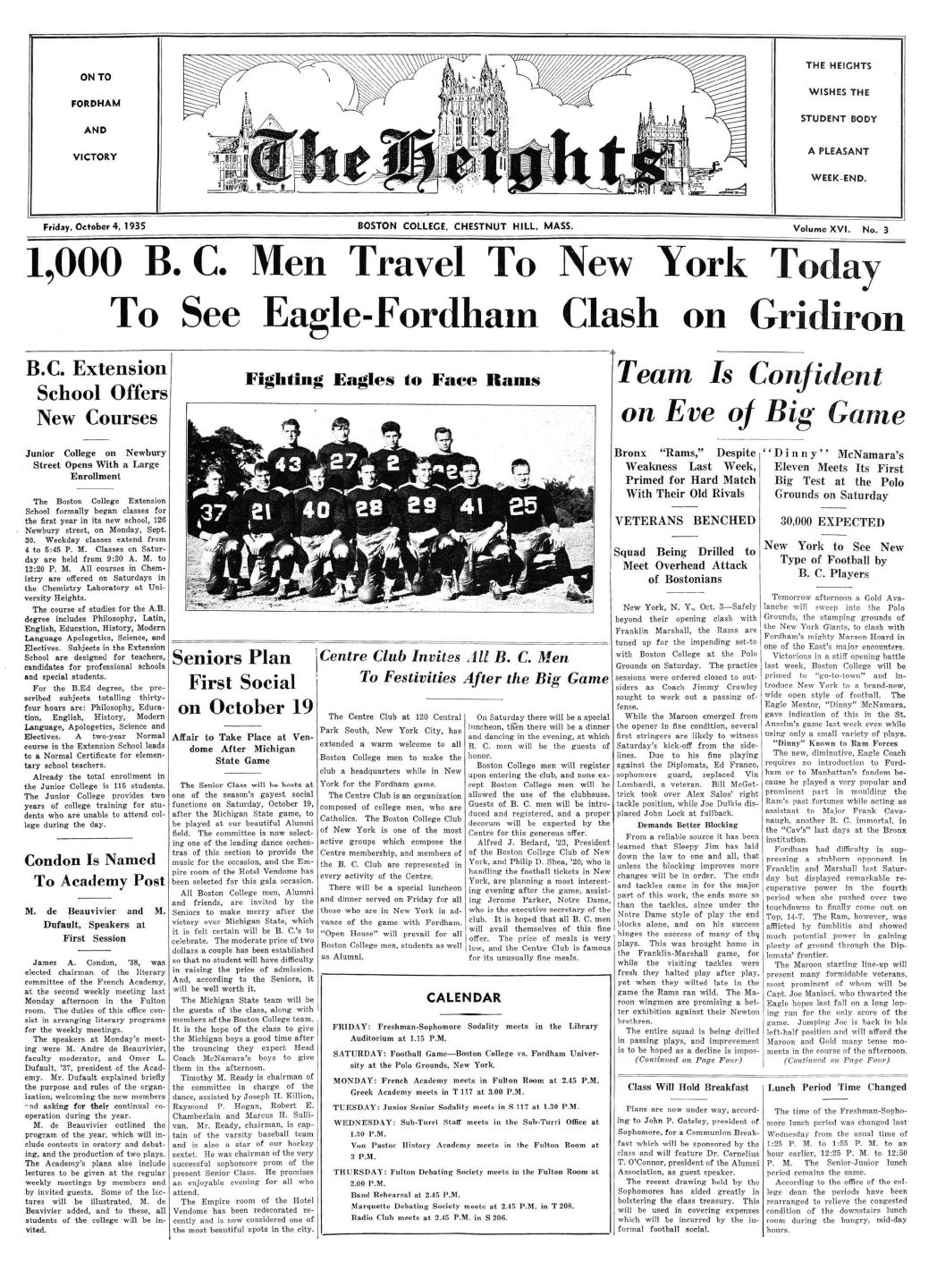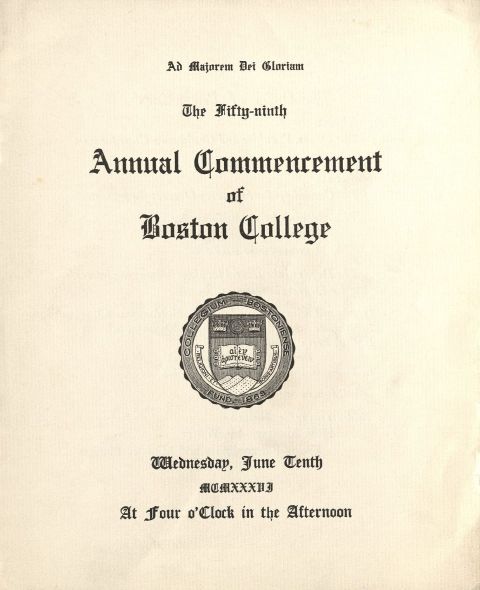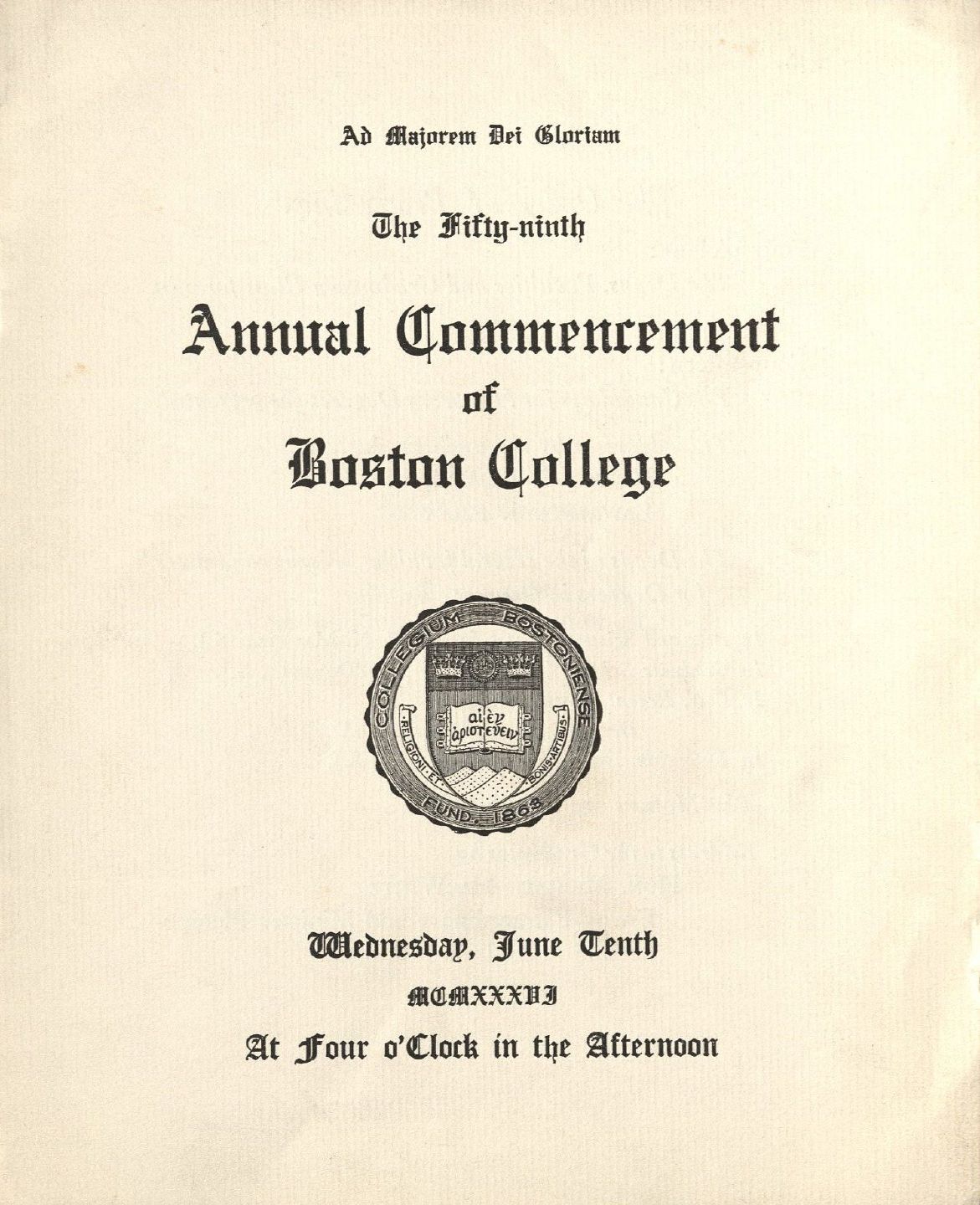Student
Education was important to the O’Neill family. His brother William O’Neill attended Holy Cross College and later went to Harvard Law School on a scholarship. He would later enjoy a career as a lawyer, a judge and assistant attorney general. Tip’s sister Mary (O’Neill) Mulcahy started teaching at the young age of 17. Ultimately, she would become the first female principal of the Cambridge Public School System.
After graduating from St. John’s High School in 1931, O’Neill did not immediately set his sights on college. He got a job driving a truck for a construction company. Three dollars a day seemed like good money for a young man during the Great Depression. He worked six days a week and socialized with friends at Barry’s Corner at night. In his autobiography, O’Neill credits Sister Agatha, one of the nuns at St. John’s, for giving him the encouragement needed to go to college. She saw him driving the truck and could not believe it. Sister Agatha said “Thomas, you should be going to college to make something of yourself.” She knew that he was not a star pupil but thought that he had potential for more than truck driving and loafing around with his friends at Barry’s Corner. After some makeup courses at Boston College High School (Latin courses), O’Neill entered Boston College in the Fall of 1932. Pictured here is O’Neill’s photograph from the 1936 Sub Turri yearbook.
Pictured below is an aerial photograph of Boston College from the 1930s. Boston College was founded in 1863 by the Society of Jesus and its students were primarily the children of immigrants (mostly, but not exclusively, young men of Irish-Catholic descent) excluded from the Brahmin-dominated private colleges and universities. In 1913, the institution moved from Boston’s South End to Chestnut Hill in Newton, Massachusetts (near the Boston city line). It was a commuter school and most students came to school by public transportation. The college was much smaller than today; there were only 2,649 full and part-time students enrolled in the 1935-1936 school year. In a 1991 interview, O’Neill recalled that “the school was small, and everybody knew each other…Everything was walk-on, you know, there were no dorms. Actually, we were only in three buildings. St. Mary’s Hall was the chapel…Everyone loved it-it was small, it was intimate, it was chummy.”
O’Neill faced a challenging and rigorous education (a classical curriculum with required coursework in Greek, Latin, mathematics, history, English, and theology that left little room for electives). However, he found time for extracurricular activities and was a member of the Sodality, Von Pastor Historical Society, and the Law Academy. During his senior year, O’Neill was elected Sergeant at Arms of this organization. He also rowed and captained the crew team and was a member of the fencing team. O’Neill’s most significant extracurricular activity took place outside of the classroom: he ran for a seat on the Cambridge City Council. Of the 48 candidates running for eight seats, O’Neill finished ninth– not bad for a college senior. It was the only election that he ever lost.
Football was a big part of Boston College life during the 1930s and Fordham University was the team to beat. In 1933 and 1935, O’Neill’s sophomore and senior years, Boston College students traveled to New York in great numbers to watch the contest. O’Neill and his buddies drove to New York in his old Ford convertible. Alas, Boston College lost 32 to 6. However, the boys had fun throwing water bags out of their hotel in Times Square until the hotel detective ordered them to stop or be kicked out. His senior yearbook reported that the 1933 Fordham trip was the “most memorable incident in O’Neill’s college career” and “he was one of the most prominent (vociferously) members of the Boston College Club of Cambridge.” In 1935, O’Neill and his friends again journeyed to New York City. The excitement of the game is captured in a detail of the Heights (the Boston College student paper) to the right. Alas, Boston College lost again; this time the score was 19 to 0. The postgame hijinks of 1933 graduated to the more sophisticated activity of listening to the Eddy Duchin Orchestra at the Plaza Hotel.
Thomas O’Neill and 248 other undergraduates finished the necessary requirements and graduated on Wednesday, June 10, 1936 at four o’clock in the afternoon. The cover of his commencement program is reproduced to the left. The Hon. Michael MacWhite, Ireland’s “Envoy Extraordinary and Minister Plenipotentiary” gave the keynote address and was awarded a honorary Doctor of Laws. His senior class voted O’Neill “Class Politician” and “Class Caveman.” The yearbook reported that he planned to “keep active in politics until he is mayor of Cambridge.” The editors also noted that O’Neill was barely defeated in his election and he was “more confident of success in the next.” Little did they know, the next election was just around the corner.

